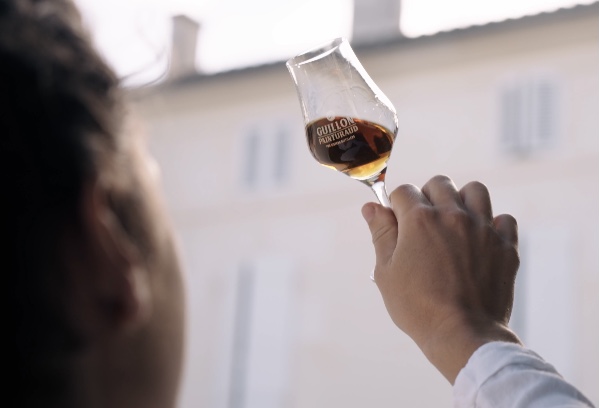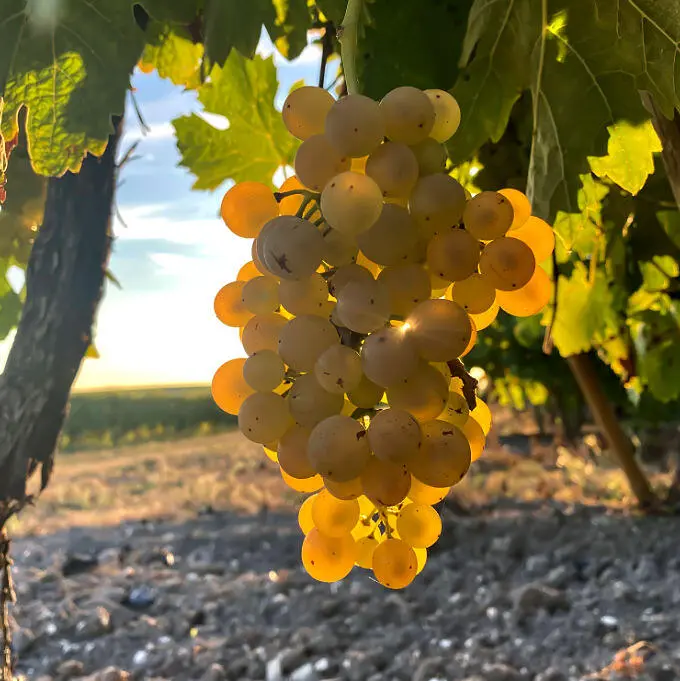Distillation is the highlight of the Cognac designation. It reveals its identity. Every winter, the wine-growing holdings live to the rhythm of the stills. Night and day, 7 days a week, the copper boilers must be carefully monitored and the distillate renewed.
1st ingredient : The distiller
In Cognac, there are two types of distillers. We are "distillers", like 4,000 of our colleagues, we are authorised to distill only our own production. About 1,300 fixed stills are installed on the estates.
A second category, the "professional distillers", are professionals authorised to distill for other winegrowers who do not have stills. There are about 100 of them. Whatever the distiller, the Charente distillation is identical: double distillation in copper stills. The capacity of the stills can be higher for the professional distillers. The end date of distillation will be March 31 following the harvest for all operators.
2nd ingredient : Copper
Charentaise distillation is done in copper stills. This choice of material is fundamental to the quality of Cognac eau-de-vie because it contributes to its elegance. Its ability to react with alcohol is the essential attribute of its selection.
Indeed, complex interactions between the fatty acids and the alcohol in the vapors offer a multitude of esters: the Cognac eau-de-vie will thus be fruitier. This saponification reaction gives lighter notes. A greasy deposit is then deposited on the inner walls of the copper, inside the pot, the lid, the swan neck and even inside the serpentine.
The distiller cleans them regularly to remove it with a high pressure device. The slow cycle of the Charentaise distillation generates the aromatic concentration known of the powerful and fruity Charentaise eaux-de-vie as soon as they are distilled. Its malleability and good heat conduction give it other advantages.

3rd ingredient : The type of distillation
Distillation can be carried out in different types of stills. The Cognac designation has established, in its specifications for the designation, distillation by the "repasse"method in a copper still. The particularity of this method lies in the double distillation.
Indeed, a first distillation of wine is carried out during a first cycle, to obtain the "brouillis", a first distillate which is around 30%vol. This distillate will then be distilled a second time (this is called "repasse"). During the second distillation, the distillate is divided into 4 parts: heads, hearts, seconds and tails.
Only the heart and a part of the seconds will be selected on our estate. The wines are kept on their lees (fermentation sediment). These will be put back in suspension during pumping in order to be distilled and amplify the aromatic capacity of our eaux-de-vie.
4th ingredient : Ageing
During the aging process, the Cognac eau-de-vie extracts compounds from the wood. It is thanks to this alchemy and happy combination that the Cognac will enrich its aromatic notes. The first phenomenon is extraction, the main woody notes are extracted.
Gradually, they will blend with the fruity and floral notes of Cognac specific to the Grande Champagneregion. The alcohol evaporates and the aromas become more complex. The phenomena of oxidation and hydrolysis also contribute to this magical process. The eau-de-vie becomes more mellow.
The ageing capacity of Grande Champagne Cognac offers a great capacity to age the eaux-de-vie produced on our estate. What a great way to create a beautiful range of Cognac and Pineau!






